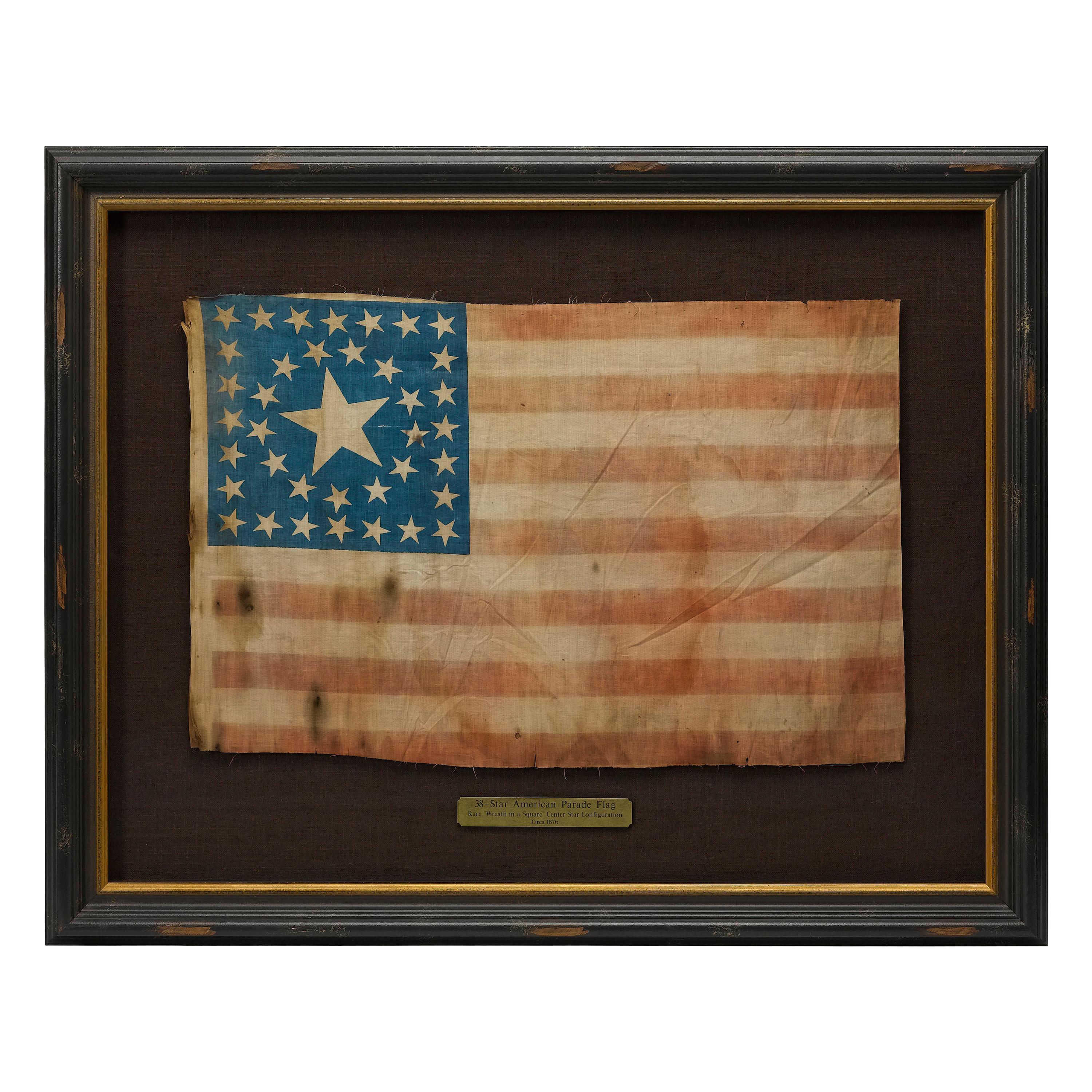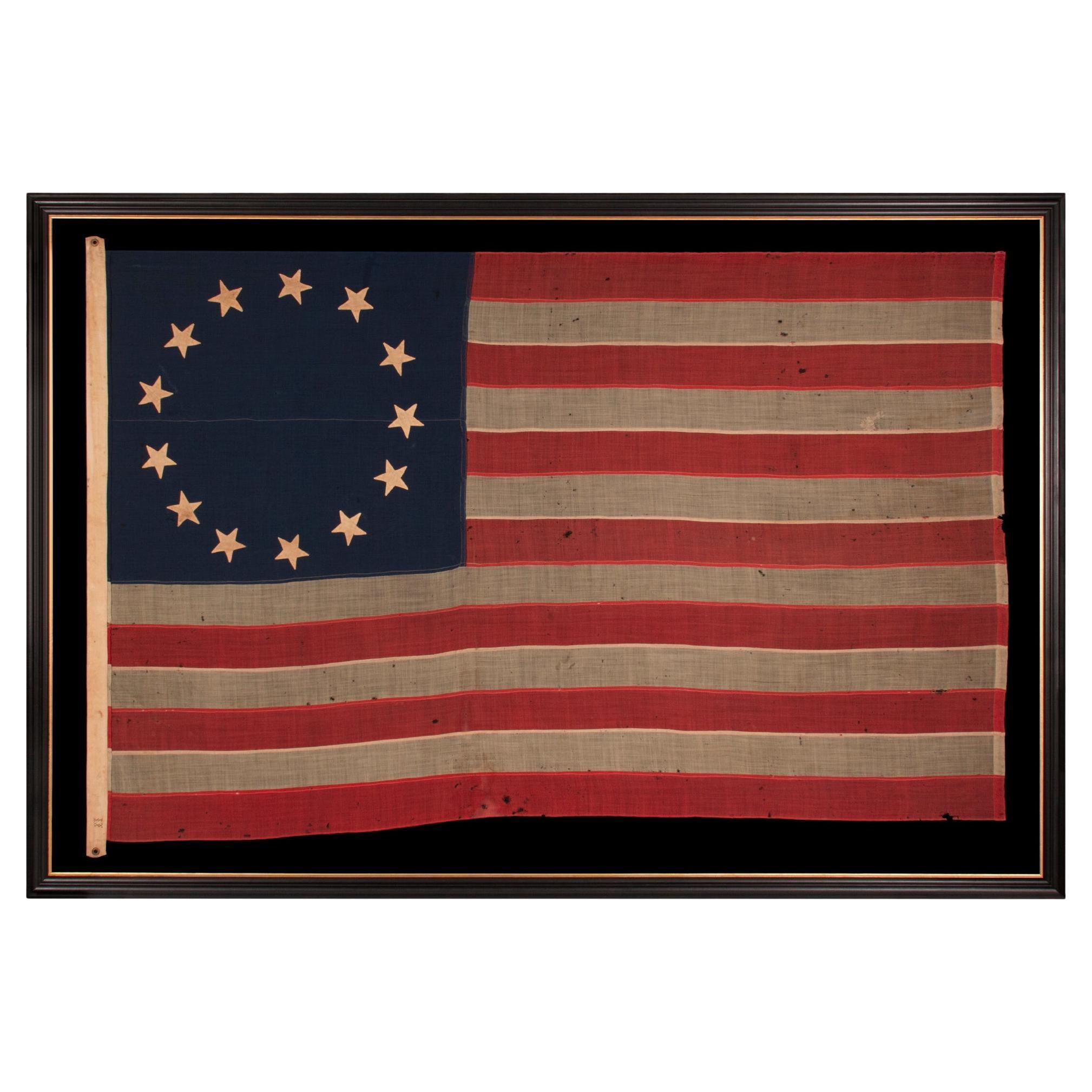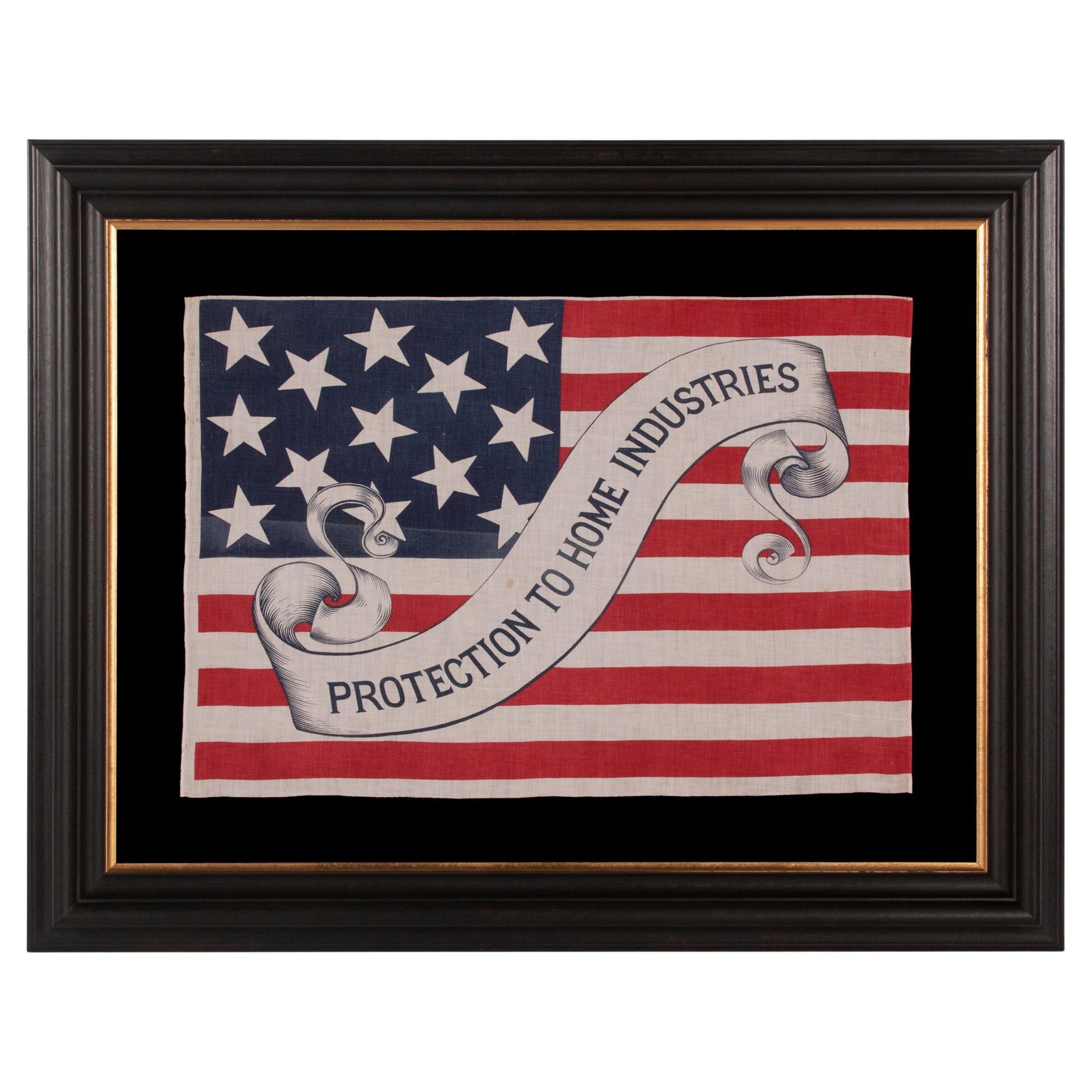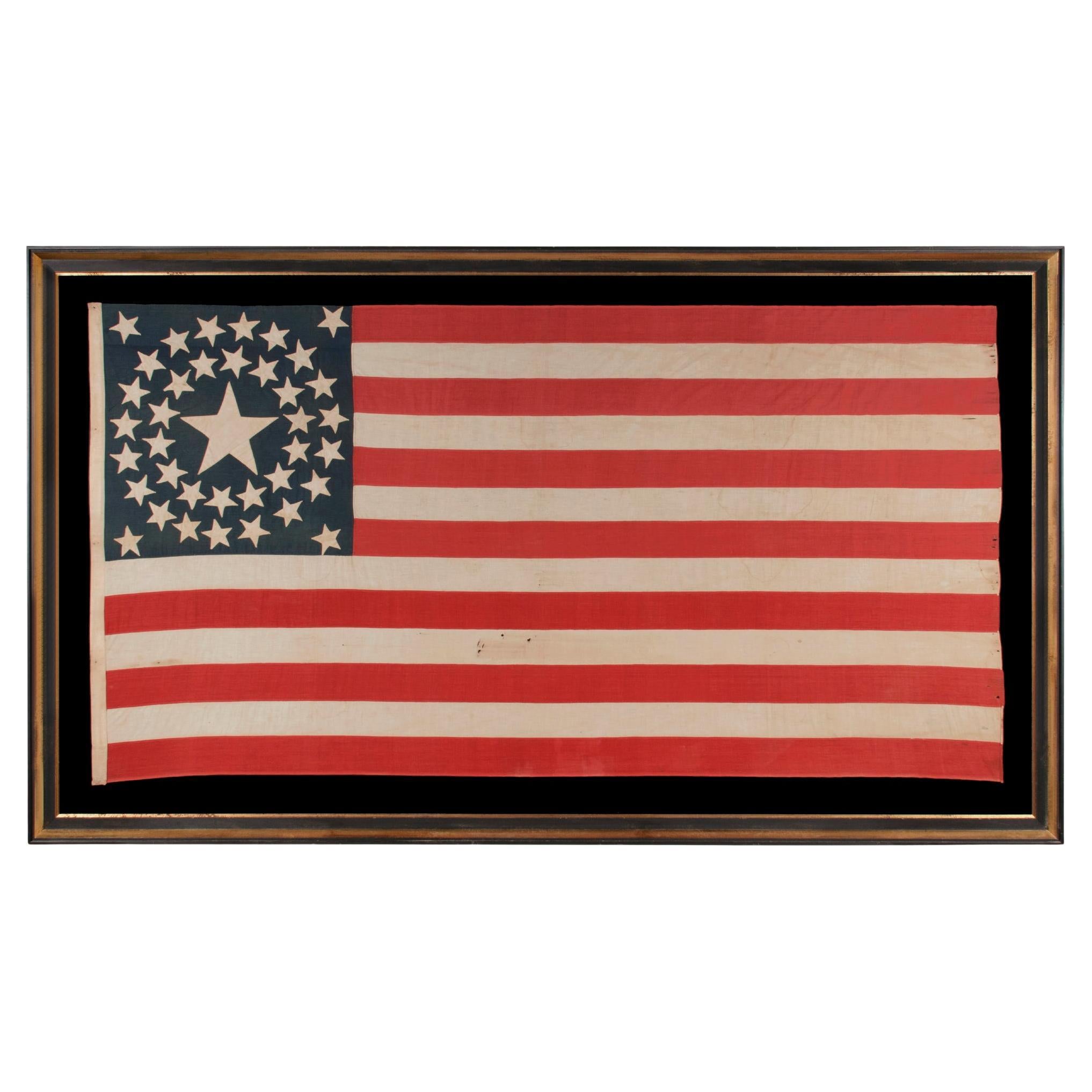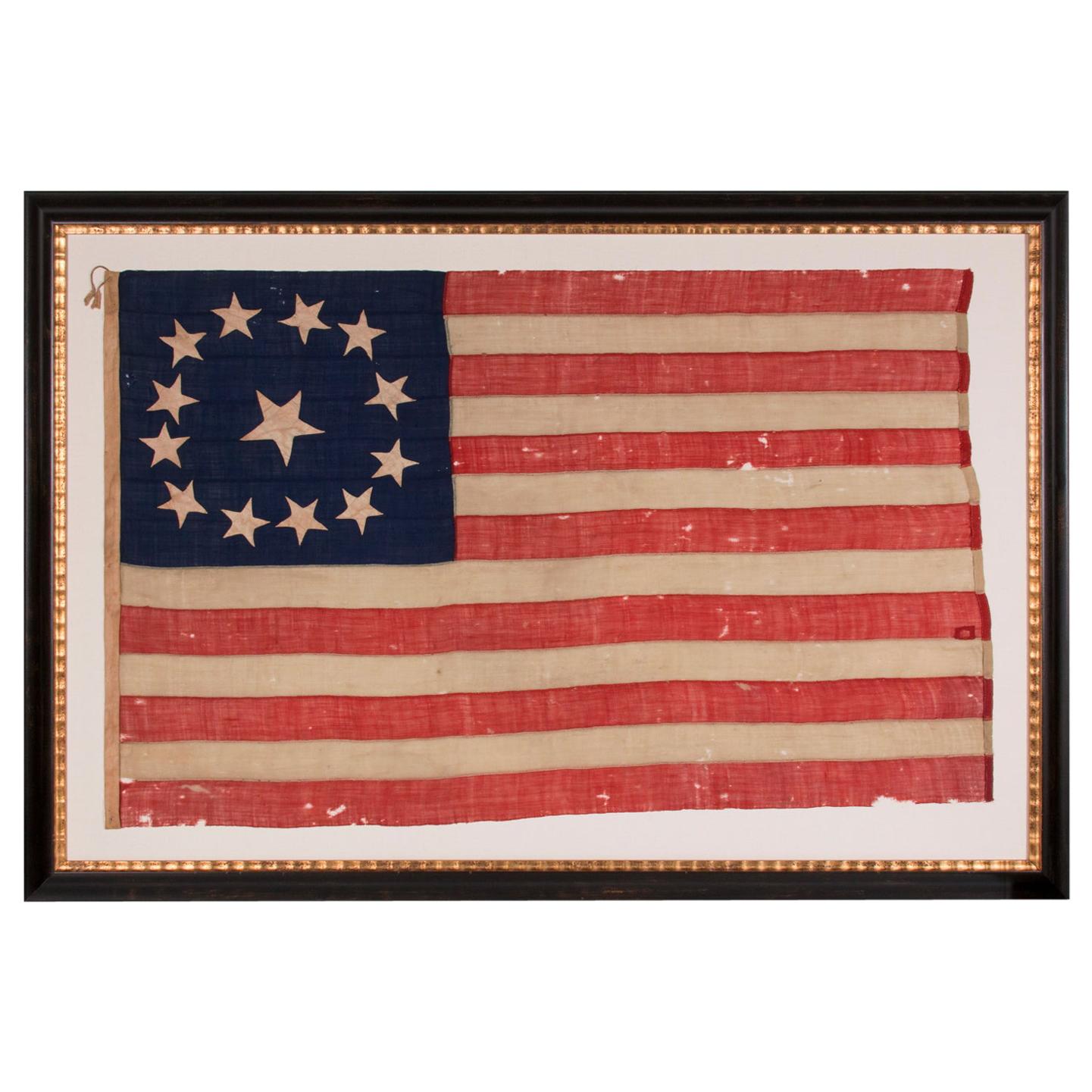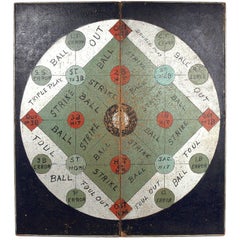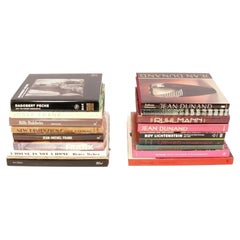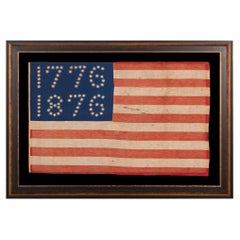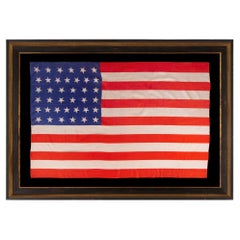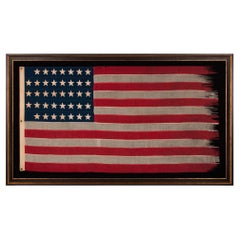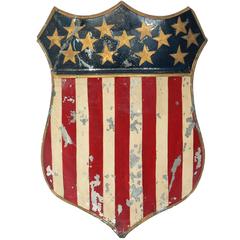
American Centennial Folk Art 13 Star Metal Shield Documented PA 1876
View Similar Items
Want more images or videos?
Request additional images or videos from the seller
1 of 10
American Centennial Folk Art 13 Star Metal Shield Documented PA 1876
About the Item
- Dimensions:Height: 18.25 in (46.36 cm)Width: 13.25 in (33.66 cm)Depth: 1 in (2.54 cm)
- Sold As:Set of 2
- Style:American Colonial (Of the Period)
- Materials and Techniques:
- Place of Origin:
- Period:
- Date of Manufacture:1870s
- Condition:Wear consistent with age and use. Minor losses. Very good original condition. Paint loss, surface scratches, rubs, and wear as seen. Crease to upper left corner. Small bend to upper right edge. Very good original condition commensurate with age and use.
- Seller Location:Atlanta, GA
- Reference Number:1stDibs: LU87187176933
About the Seller
4.6
Vetted Seller
These experienced sellers undergo a comprehensive evaluation by our team of in-house experts.
Established in 1996
1stDibs seller since 2009
2,198 sales on 1stDibs
Typical response time: 3 hours
More From This SellerView All
- Little Bighorn Survivors Photograph by Bill Groethe American IndiansLocated in Atlanta, GAGelatin silver photograph of “The Battle of the Little Bighorn Survivors”, by Bill Groethe, American, circa 1948. Recently professionally framed in a vintage clean lined Mission oak ...Category
Vintage 1940s American Native American Historical Memorabilia
MaterialsGlass, Wood, Oak, Paper
- Large-Scale American Folk Art Carnival Game Board, Very GraphicLocated in Atlanta, GALarge-scale Folk Art Carnival game board, American, circa 1940s. This painted carnival game board came from Texas and combines wonderfully patinate...Category
Vintage 1940s American Folk Art Carnival Art
MaterialsWood, Cork
- Selection of Coffee Table Books - Furniture Design Interior Design Fashion ArtBy Jean Dunand, (after) Jean Michel FrankLocated in Atlanta, GASelection of Coffee Table Books, priced at $150 each. If one of the books is sold, it will have SOLD next to the title below. These books are all from the estate of . was the President of The Art Deco Society of New York City and had an incredible library of books on furniture design, interior design, art, photography, and fashion. Many of the books focused on Art Deco or mid century modern design. Please see our other listings for more books from the same estate. Please note that we are not specialists in books. All of the books are in very good condition and were well cared for in a smoke and pet free environment. There may be some small tears to slipcovers, scratches, rubs, and wear commensurate with age and use. The books in this listing are: Stack Left Dagobert Peche and The Wiener Werkstatte by Neue Galerie Josef Frank Architect and Designer Billy Baldwin by Adam Lewis New Dimensions by Paul Frankl Jean-Michel Frank by Rizzoli Jean Michel Frank by Editions Du Regard A House Is Not A Home Bruce Weber Photography Art Deco by Skira Stack Right Jean Dunand by Anthony Delorenzo Jean Dunand Ruhlmann Master of Art Deco Jean Dunand His Life and Works...Category
Early 2000s American Mid-Century Modern Books
MaterialsPaper
- Collection of Leather Bound Art Deco Photo Albums of European TravelLocated in Atlanta, GACollection of Leather Bound Art Deco Photo Albums of European Travel, the actual albums are probably French, circa 1920's. They document fabulous trips throughout Europe in the 1920'...Category
Vintage 1920s French Art Deco Photography
MaterialsLeather, Paper
$1,600 Sale Price / set46% Off - Collection of Handmade Mexican Folk Art MasksLocated in Atlanta, GACollection of Handmade Mexican Folk Art Tin Masks, Mexican, circa 1950s. Each mask is unique and extremely detailed. The largest mask measures 21"...Category
Vintage 1950s Mexican Folk Art Masks
MaterialsCopper, Tin
$2,500 / set - Large Scale Mexican Folk Art Ceramic Angel VesselLocated in Atlanta, GALarge scale Mexican Folk Art ceramic or stoneware angel vessel, Mexican, circa 1950s. We purchased the estate of an Atlanta Coca Cola executiv...Category
Vintage 1950s Mexican Folk Art Ceramics
MaterialsStoneware
You May Also Like
- 1776-1876 Centennial Celebration Flag, ca 1876Located in York County, PAAntique American Flag with 10-pointed stars that spell “1776 – 1876”, Made for the 100-Year Anniversary Of American Independence,one of the most graphic of all early examples. Man...Category
Antique 1870s American Political and Patriotic Memorabilia
MaterialsCotton
Price Upon Request - 38 Star Antique American Flag, Colorado Statehood, ca 1876-1889Located in York County, PA38 star antique American parade flag with scattered star orientation, made of silk, with generous scale and vivid colors, Colorado Statehood, 1876-1889 38 star American national p...Category
Antique Late 19th Century American Political and Patriotic Memorabilia
MaterialsSilk
Price Upon Request - 38 Star American Flag, Stars in Notched Pattern, ca 1876-1889Located in York County, PA38 HAND-SEWN STARS IN A "NOTCHED" PATTERN, ON AN ANTIQUE AMERICAN FLAG WITH BEAUTIFUL WEAR FROM HAVING BEEN EXTENSIVELY FLOWN, MADE AT THE TIME WHEN COLORADO WAS THE MOST RECENT STATE TO JOIN THE UNION, 1876-1889 38 star Antique American flag, made during the period when Colorado was the most recent state to join the Union. The stars are arranged in what is known as a "notched" pattern, in which two spaces were left open along the hoist end, in the first and last rows, in anticipation that two more Western Territories would soon join the Union. The latter 19th century was a time of when much of the land in and about the Continental Divide was formalized into states, and there was continual speculation about which ones would be accepted next, and with what boundaries. The stars of the flag are made of cotton and are double-appliquéd (applied to both sides) with a lineal, treadle stitch. The canton and stripes of the flag are made of wool bunting that has been pieced with treadle stitching. The canton was constructed from five separate lengths of fabric, which is an unusual feature, though hardly unknown. To each of these a row of stars was sewn. This manner of construction is sometimes encountered and tends to be an early trait, at least when it occurs in flags of this scale and smaller. When encountered, it also seems to have been preferred in flags meant for maritime use. While the feature does not by any means guarantee this fact, it is a reasonable, educated guess, based upon my examination of many other examples. A flag with a 5-piece canton, such as this, would have been less likelihood to stretch, with increased structural integrity. The alternative is that this was simply an example made when there were at least five pieces of leftover fabric, of a reasonable size to made individual rows, and that what it actually demonstrates is the careful conservation of scarce resources. There is a sailcloth canvas binding along the hoist, with 3 brass grommets, evenly spaced. Perhaps the best feature of the flag is the evidence it displays of having been extensively flown, with the fly end whipped out from wind exposure. While many flags display damage from a combination of having been flown, exposure to the elements, various mishaps, and improper storage, very few exhibit wear such as this, which is both endearingly and visually attractive. This one shows its age beautifully, whipped out along the fly end, with losses that convey an element of movement, that most flags don’t capture in the state in which they survive. Colorado became the 38th state on August 1st, 1876. This was the year of our nation’s 100-year anniversary of independence. Per the Third Flag Act of 1818, stars were not officially added until the 4th of July following a state's addition. For this reason, 37 was the official star count for the American flag in 1876. Flag-making was a competitive venture, however, and few flag-makers would have been continuing to produce 37 star flags, when their competitors were making 38’s. It is for this reason that 38 and 13 stars (to represent the original 13 colonies...Category
Antique Late 19th Century American Political and Patriotic Memorabilia
MaterialsWool
Price Upon Request - 38-Star Antique American Flag with Unique Canton, circa 1876-1890Located in Colorado Springs, COThis is a striking 38-star American flag. The flag dates to 1876-1890, when Colorado (represented by the large star in the center of the flag’s canton) joined the Union as the 38th s...Category
Antique Late 19th Century American Political and Patriotic Memorabilia
MaterialsMuslin
- 13 Star Antique American Flag in the Betsy Ross Pattern, ca 1861-1865Located in York County, PA13 star antique American flag in the Betsy Ross pattern, one of just three examples that I have encountered that pre-date the 1890’s; an extraordinary find, civil war period (1861-1865) or just after, extremely large among its counterparts of all periods in this design: Exceptional, early, American national flag, with 13 stars arranged in the circular wreath pattern most often attributed to Betsy Ross. Since there was no official configuration for the stars of the American flag until 1912, when our nation received its 47th and 48th states, the design, before that time, was left to the whims of the maker. This led to an almost unimaginable spectrum of star arrangements on the American flag during the 18th and 19th centuries. Even within the 13 star count, alone, there are at least 80 known patterns—more than the average person would even think possible. 13 star flags have been made throughout American history, from at least June 14th, 1777, when the first Flag Act was passed by Congress, until the present. They have been continuously produced for reasons both patriotic and utilitarian. Because this was the original number of stars on the American flag, representing the 13 colonies, it was appropriate for any device made in conjunction with celebrations or notions of American independence. 13 star flags were thus displayed at patriotic events, including, but certainly not limited to, such occasions as Lafayette’s final visit, in 1825-26, the nation’s centennial in 1876, and longstanding celebrations of Independence Day. From at least 1840 onward, 13 star flags were produced for presidential campaigns, drawing a parallel between the past and present struggles for freedom, and were carried by soldiers, during the Mexican and Civil Wars, for the same purpose. Throughout history, and even today, they are boldly displayed at every presidential inauguration. 13 star flags were flown by American ships both private and federal. The U.S. Navy used 13 stars on the ensigns made for small boats, because they wished the stars to be more easily discernable at a distance. Private ships often copied Navy practice, and when commercial flag makers first began to produce flags with pieced-and-sewn construction, in small sizes, in large quantity, they frequently employed the 13 star count. Flags in the Betsy Ross design are widely admired, due to the longstanding popularity of the Ross family myth. While many Americans learned in grammar school that Betsy Ross made and designed our first flag, and that the stars appeared in a circular fashion, there is, unfortunately, no way to prove the claim. No colonial examples have survived with this pattern of stars. In fact, while arranging the stars in a single circle seems quite logical, among the various choices that might come to mind, early American flags with this star pattern are curiously absent. One of the interesting misconceptions about 13 star flags is that the Betsy Ross pattern, even if not the original design, must have been common in early America. Logic would suggest this, given the frequency with which it appears in modern times, but this isn’t actually the case. In fact, the pattern is seldom encountered anywhere until much later. In more than 30 years of buying and selling early Americana, and over 20 years of extensive focus on the American flag specifically, through aggressively buying, researching, evaluating, restoring, and curating exhibitions, I have thus far encountered just three examples of Betsy Ross pattern flags that I can confidently date prior to the 1890's. No one knows what the first flag looked like. While there is no precise reason that the Betsy Ross design could not have been the first, one of the best arguments against it, is illustrated by the simple fact that so many 13 star flags exist without it. If the Ross configuration was the original, it stands to reason that the pattern would have been reproduced with at least some degree of frequency. Research conducted by the National Museum of American History notes that the story of Betsy Ross making the very first American flag for General George Washington, in the company of George Ross and Robert Morris, entered into American consciousness about the time of the 1876 centennial. The tale was immensely popular among an American public eager for stories about the Revolution and its heroes. The first documentation of it appeared shortly beforehand, in 1870, in a paper written by Betsy’s grandson, William Canby, for the Pennsylvania Historical Society. At the time, Canby made no mention of how the flag was designed, save for the fact that it had 5-pointed stars, per his grandmother’s suggestion. Because no earlier documentation supports the story, most flag scholars feel it was a grand hoax, fabricated by Canby for his own interests. Nothing survives in the collective writings of the three men, for example, nor in records of their words and deeds, which are fairly extensive. As with most things, reality is perhaps somewhere in the middle ground, with some of the details based on fact and some on fiction, made up, misinterpreted, or imagined from family accounts. The first time that a star configuration gets attached to the Ross story appears to have occurred during the last decade of the 19th century. In 1892, Charles Weisgerber painted a nine-by-twelve-foot rendition of the fabled meeting between Betsy and George Washington, in which there is a flag with a circular wreath. Shortly afterwards, in 1898, Betsy’s granddaughter and great-granddaughter began to make flags in the East Wing of Independence Hall in Philadelphia, selling them to tourists while disseminating the family folk tale. In that same year, Weisgerber and a “group of concerned citizens” sought to preserve Betsy’s former Philadelphia residence at 239 Arch Street, where she lived at the time the flag would have been sewed. Weisgerber moved his family into the house and immediately opened to the public the room in which Betsy was said to have worked her magic. Ten-cent memberships were sold to fund renovations and donors received a small calendar, to which a cotton 13 star Betsy Ross pattern parade flag was affixed. The effects of these events caused the Ross legend to stick and the story, with the corresponding flag design, has appeared ever since in more places than one could ever hope to count. The stars of this particular flag are made of cotton, hand-sewn, and double-appliquéd (applied to both sides). The canton and stripes of the flag are made of wool bunting that has been pieced and joined with treadle stitching. There is a sailcloth canvas binding along the hoist, with two brass grommets, one each at the extreme top and bottom. Along this, on the obverse, near the bottom, are two, unusual characters, embroidered with brown thread. These may be letter “I’s,” possibly forming a the Roman Numeral “II.” They are followed by an inscription, in blue ink, that appears to read “A. N. Smith.” The first character is stylized, and may alternatively be a “D,” “H,” or perhaps a “J.” Note how the binding is extended beyond the top and bottom-most points. Though quite unusual, this is sometimes encountered in early examples. The folding of the wool bunting back onto itself, with the binding stitched so that part of the fold is exposed, tends to be an early characteristic. Common in Civil war flags...Category
Antique 1860s American Political and Patriotic Memorabilia
MaterialsCotton
Price Upon Request - 13 Star American Parade Flag with Rare Design, Ca 1888 Ex Richard PierceLocated in York County, PA13 Star American parade flag in an extremely rare design, with “protection to home industries” slogan on a fanciful, scrolling streamer, made for the 1888 presidential campaign of Benjamin Harrison; formerly in the collection of Richard pierce. 1888 Benjamin Harrison campaign flag, printed on cotton, with 13 large stars in a 3-2-3-2-3 pattern, upon which a whimsical, scrolling streamer is superimposed that features the slogan: “Protection to Home Industries.” There are numerous styles of both documented and undocumented, red, white, and blue bandanas and handkerchiefs, made for Harrison’s campaign in this year, as well as from the subsequent one, in 1892. Most bear variations of text to support the “Protection for American Industries” platform of the Republican Party. America was in the midst of the industrial age and there was a great deal of public interest, both in protecting growth and discouraging both imported goods and immigration. The constant stream of immigrants posed great challenges for a working families, competing for scarce jobs, in work environments that were already often far from ideal. In post-Civil War America, many of the working men were Civil War veterans. Bandanas abound from Harrison’s Campaigns, but flags do not. This example, along with three others, were once part of an 1888 patriotic quilt that was disassembled by a dealer and sold piecemeal to collectors. I eventually acquired all four. Fifteen to twenty years ago, these were the only four known copies. A couple of others have since surfaced, but the total count known still stands closer to 5 than 10. The use of 13 stars is seen in the flags of various candidates in the 19th century. Among these are Abraham Lincoln (1860 campaign), Henry Clay (1844 campaign), John Fremont (1856), and Benjamin Harrison’s grandfather, William Henry Harrison...Category
Antique 1880s American Political and Patriotic Memorabilia
MaterialsCotton
Price Upon Request
Recently Viewed
View AllMore Ways To Browse
Americana Folk Art Signs
Lancaster County Pa
Used Furniture Lancaster Pa
Used Furniture Lancaster County Pa
Antique Furniture Lancaster Pa
Acid Wash
Acid Washed
Union Flag
Black And White Antique Pattern
19th Century Italian Scale
Gold Flag
Ships Flag
Ship Flags
Flag Ship
Antique Wash Set
Union Pattern
Gilded Art Large Frames
Antique White Wash



